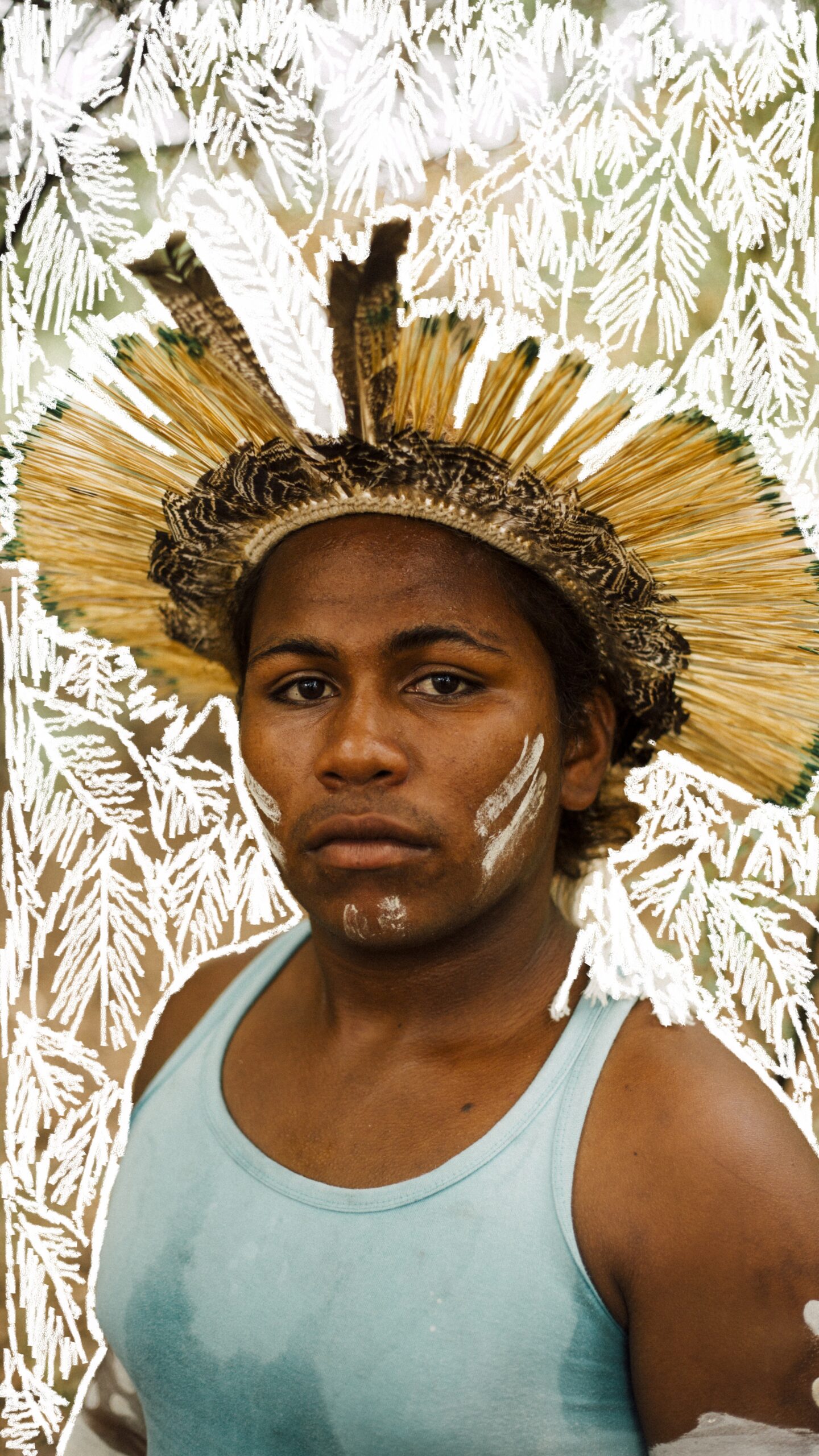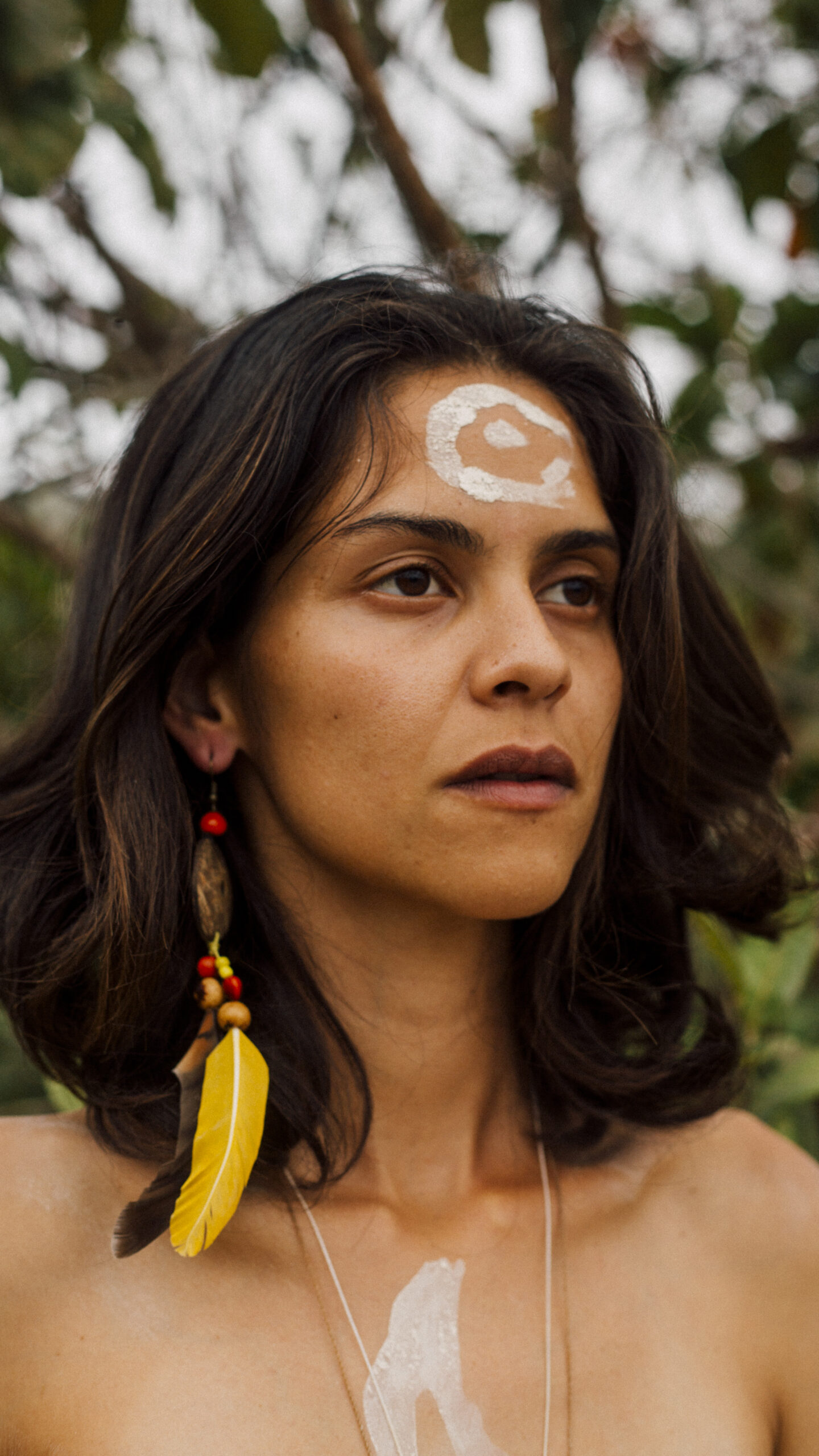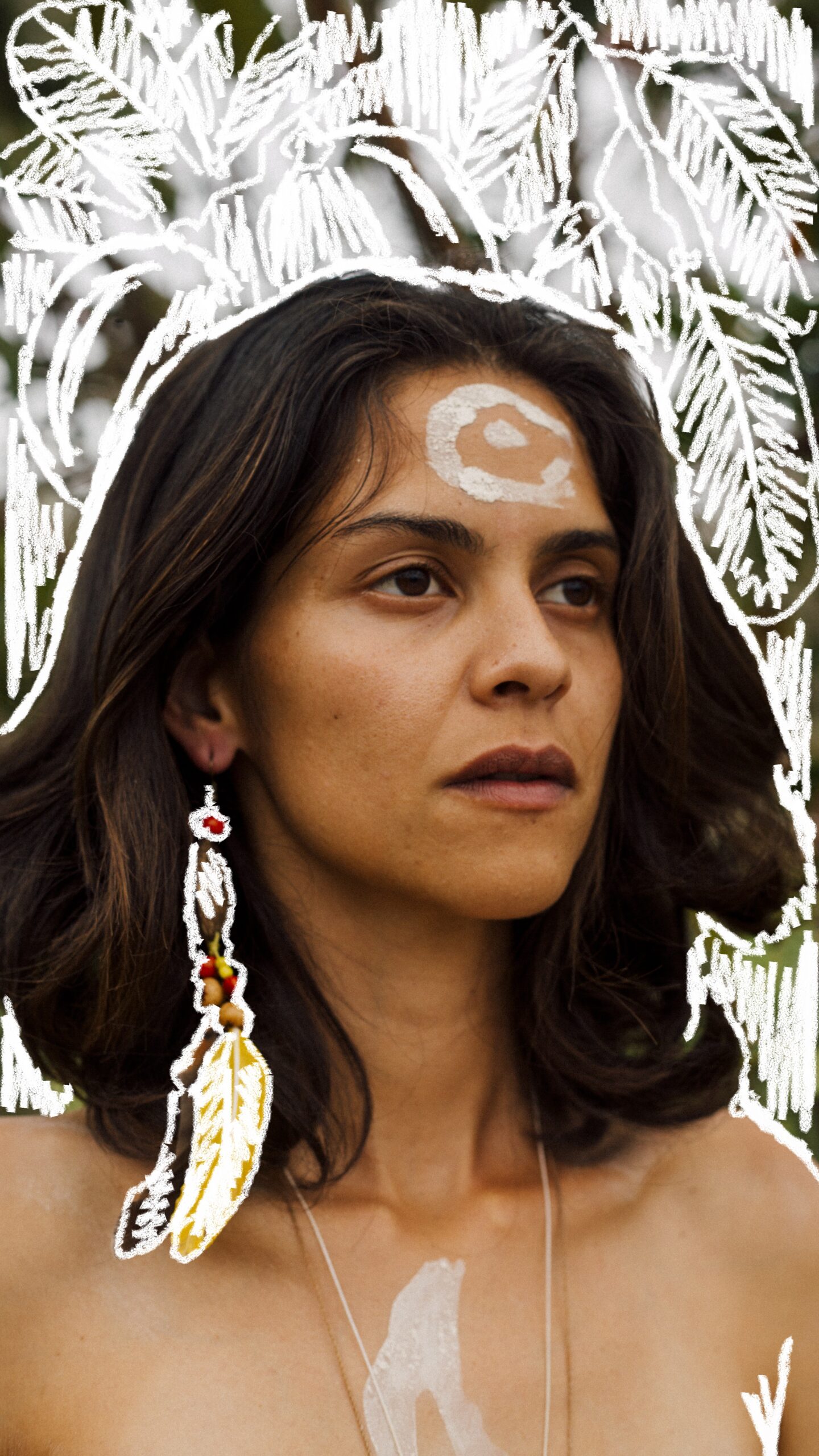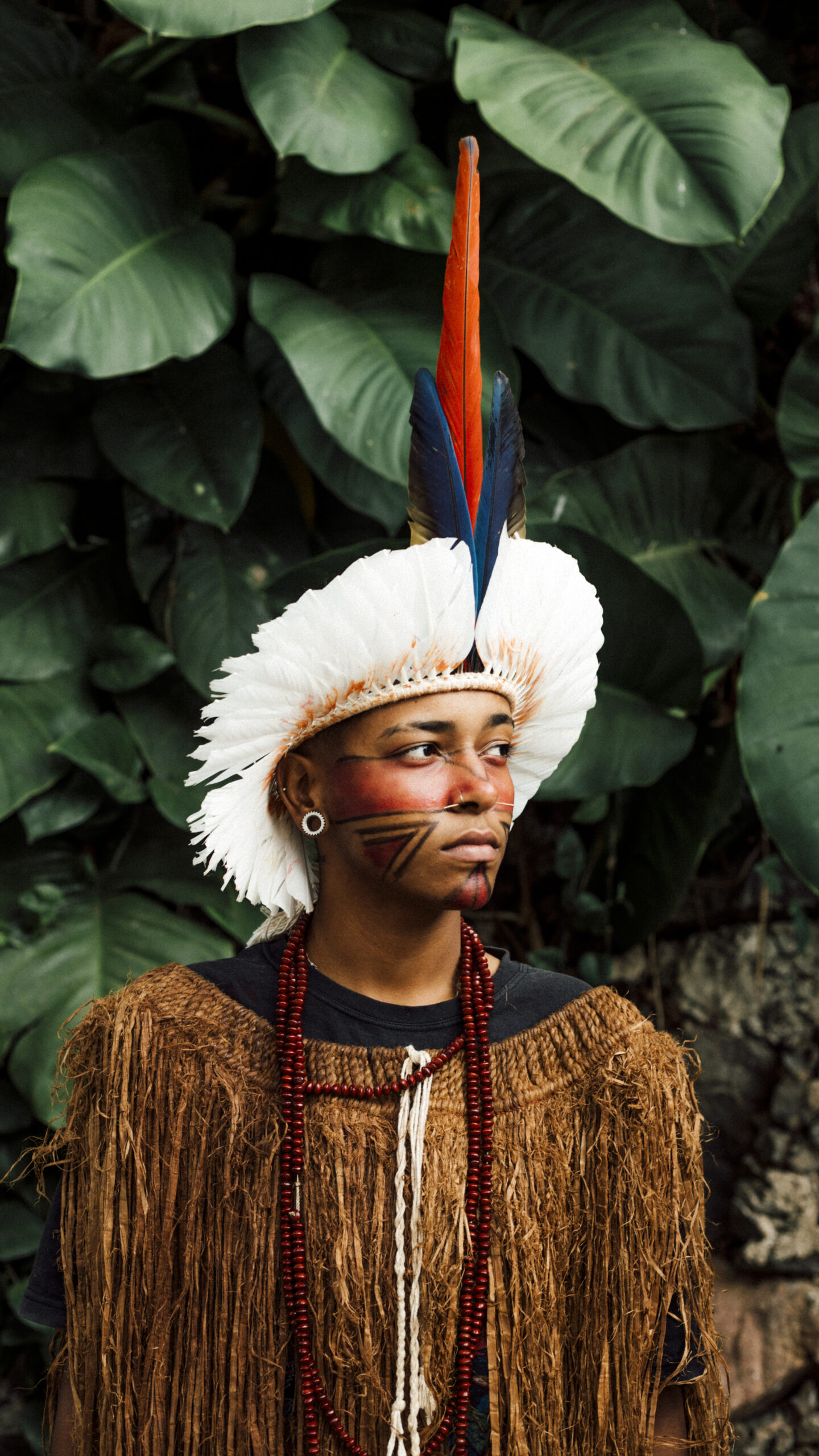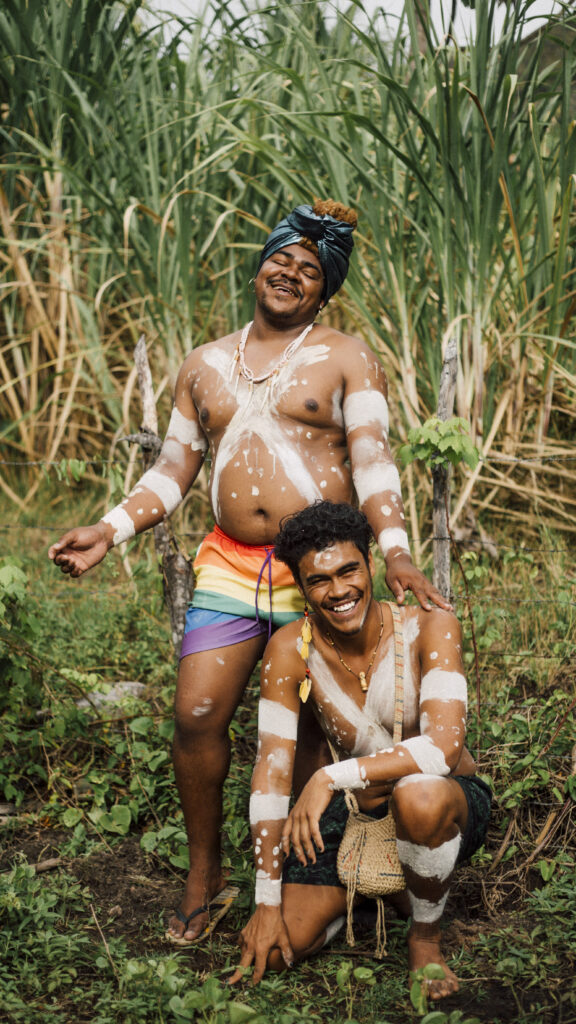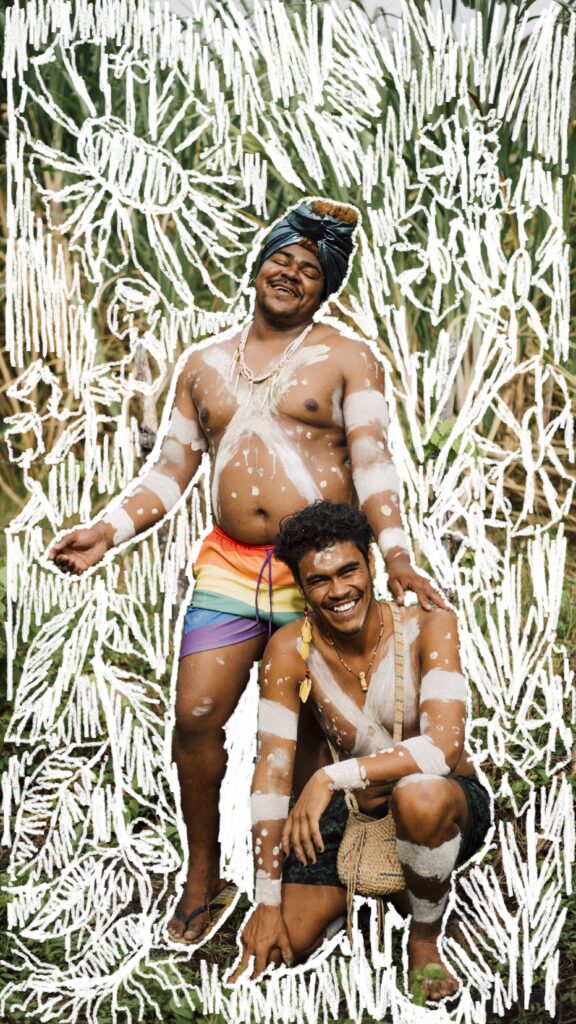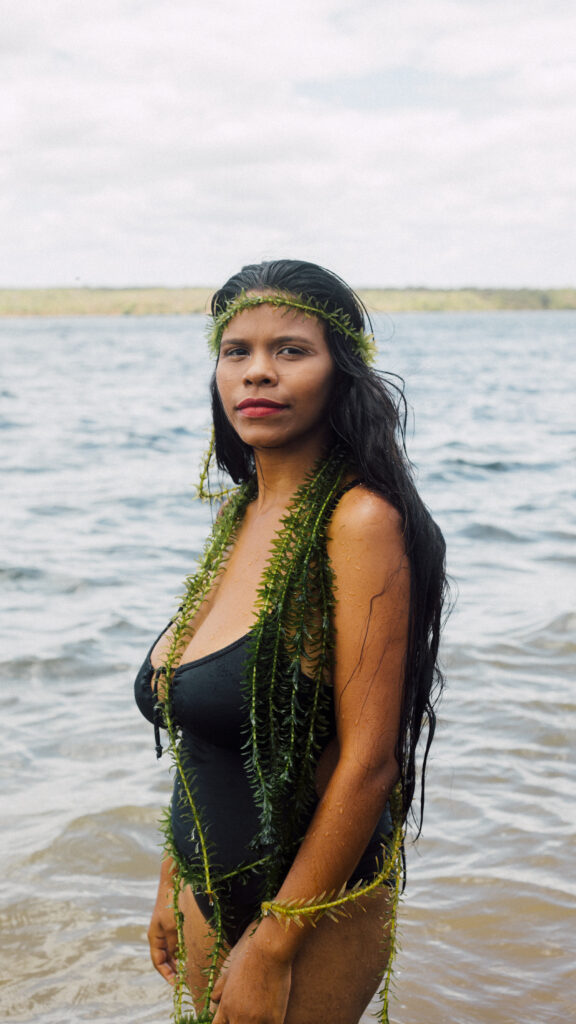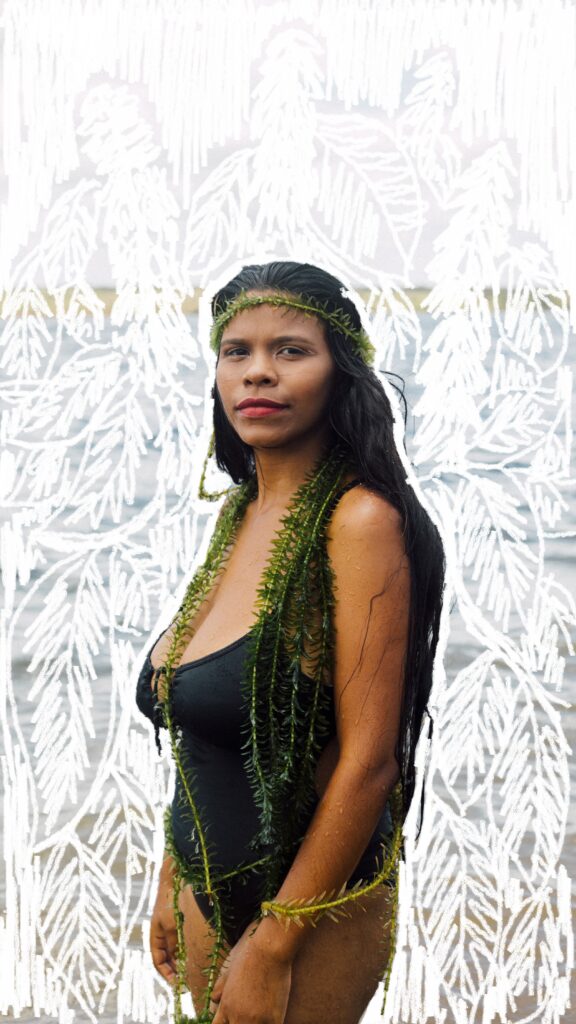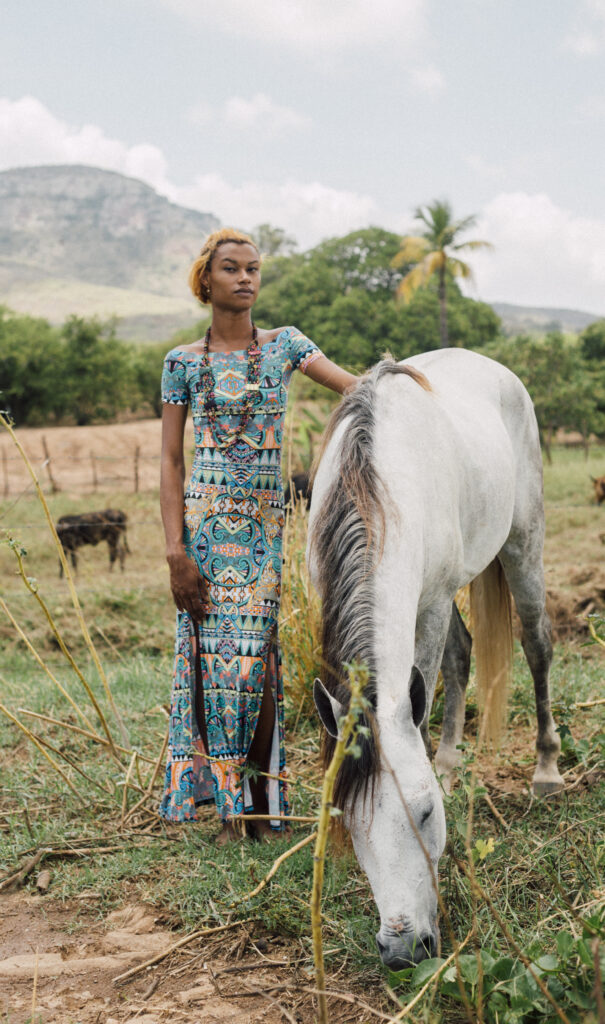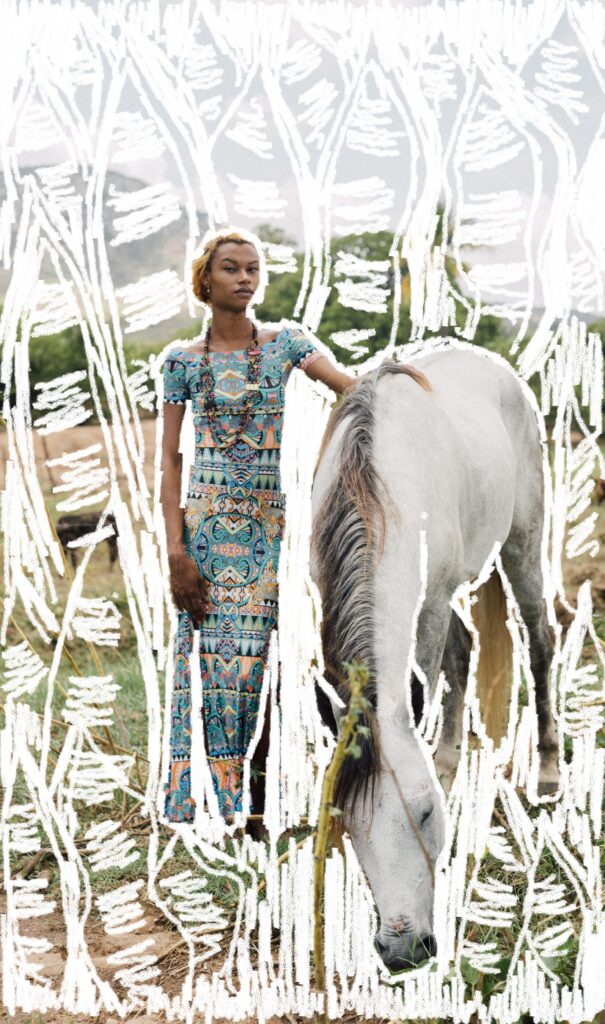Interview: Artist Laryssa Machada on her work ‘Origem’ in ‘Liquid Gender’
In this interview with Laryssa Machada, the artist talks to us about her intentions behind the work, the stories portrayed within the series, and what she hopes visitors will take away from it.

Laryssa Machada with her work 'Origem' at the Sainsbury Centre exhibition, 'Liquid Gender'
In this interview with Laryssa Machada, Bea Prutton (Digital Communications & Creative Curator) hears about the Brazilian multidisciplinary artist’s intentions behind the series ‘Origem’ in our ‘Liquid Gender’ exhibition, the stories portrayed within the series, and what she hopes visitors will take away from it.
Laryssa Machada and Antônio Vital Neto Pankararu are bringing stories of Indigenous LGBTQ+ peoples to the fore in our current exhibition, ‘Liquid Gender’ as part of our ‘What is Truth?’ season.
Laryssa Machada (b.1993, Brazil) is a visual artist, photographer and filmmaker whose work explores decolonising rituals and new ways of envisioning the future, with a particular focus on LGBTQIA+ and Indigenous people, people of colour, as well as our relationship with nature.
Her solo work has been exhibited at the São Paulo Museum of Modern Art and her work with Thydêwá has been exhibited at various locations in Brazil and the UK.
Antônio Vital Neto Pankararu (b. 1997, Brazil) studied education at the Federal University of São Carlos, São Paulo state, and is a self-taught photographer, artist, writer, rapper and YouTuber from the Pankararu Indigenous Territory of Brejo dos Padres in the Pernambucan Sertão.
In 2018 he was involved in the Memória Viva (Living Memory) and Arte Eletrônica Indígena (Indigenous Electronic Art) projects, both run by the NGO Thydêwá, and was also interviewed in 2019 by BBC Sounds for a programme entitled ‘Brazilian Art under Bolsonaro’. He can currently be found on Instagram @oribamusic and his drawings are on Tumblr @xilobisco.
Their series, ‘Origem’ (2020) aims to portray real stories of those peoples “based on intimacy and belonging”. The works are empowering and celebratory. Machada says, “the main point was to connect with the lives of people living in freedom: living freely in their territories, loving whom they choose and being who they are.”
- Portrait from the ‘Origem’ series.
- Portrait from the ‘Origem’ series, featuring illustrative background added through AR technology.
B.P. What made you want to create Origem? Can you tell us a bit about what life is like for queer Indigenous people in Brazil and why, for you, it was so important to portray this in the work?
L.M. Other expressions of love, gender and sexuality were common practices before colonisation, that’s why the name Origin. To remember, celebrate and fight for these experiences in the present.
Homosexuality and trans-sexuality, which are Western terms, have come to mean different things to different people over more than 500 years. For some, these terms have come to signify madness, disease, and this dangerous misconception has led to many forms of physical and psychological violence. These misconceptions have unfortunately taken hold in all sorts of different places, from the big cities to the Indigenous villages.
In the period of the great navigations, colonisation by means of forced conversion to Christianity deprived Indigenous peoples of many things they had in common: mutual love, their mother tongues and the concept of equality between people – things that are still being repressed today.
Each Indigenous LGBTQI+ person interviewed for the Origem series reported different experiences, but the need for dialogue around and support for one’s mental health were recurring points. So, the main idea of the project is to create reference points so others can see their stories told and, also, to encourage dialogue.
B.P. Can you tell us about the subjects of the photographs and why you chose to portray them and their stories?
L.M. We worked with friends, and friends of friends. Some came by recommendation as well.
Each person’s story is quite unique; there are those who still remain in the village, those who left, those who were more accepted by the community, those who faced more challenges.
The idea is to make a documentary at some point to delve deeper into the stories we heard in the interviews.
B.P. In addition to the stunning photographs, there is another layer to the Origem series. In collaboration with Lucia Grossberger Morales, Origem incorporates an augmented reality element which allows visitors to hold up their device and witness swirling forms of white flora appear around the subjects of the portraits.
What gave you the idea to incorporate the AR element into the piece?
L.M. In fact, the first proposal was just photographs and paintings with medicinal plants on some images with the aim of promoting healing for the person portrayed.
The AR element came as a way to promote interactivity, encouraging people to see things differently.
B.P. You use very active terms when you refer to the work. One quote from you and Antônio, which is included in the gallery, is:
“These images offer our eyes much more than simple representations. They are the sparks of the beginning of a profound change in the history of colonisation. The colonisers tried to extinguish our language and our love, but these sparks ignite the movement to regenerate our existence and satisfy our desire to be ourselves.”
The work seems to have its own agency, which is activated by the visitor’s encounter with it.
What is one thing you hope visitors will take away from their interaction with the work?
L.M. I think it is important to deconstruct and reshape the idea we have about gender and sexuality, beyond Western boxes.
Because there are other expressions of life, of relationships, of affection, of strengthening, beyond those that are commonly given names.
B.P. How has your experience been so far exhibiting at the Sainsbury Centre as part of ‘Liquid Gender’? What were your thoughts when you visited the show?
L.M. The exhibition is beautiful!
I was very happy to see so many alliances around the world, and so many things that connect us.

